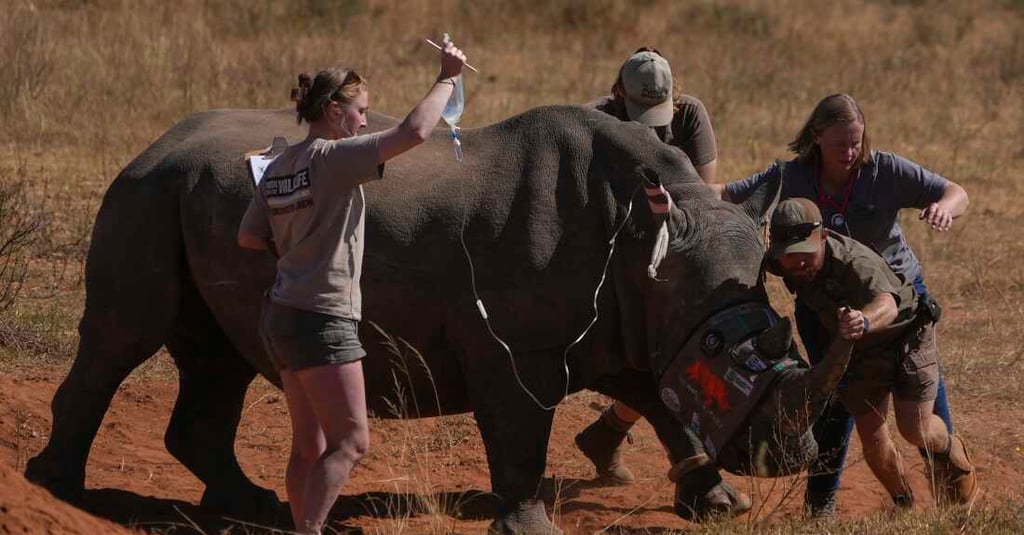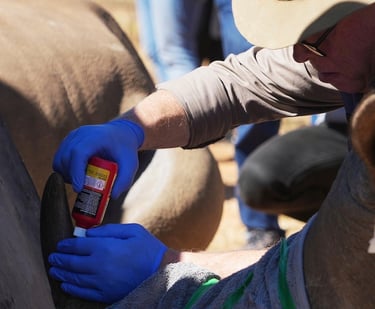South African Scientists Inject Rhino Horns with Radioactive Isotopes to Combat Poaching
In a groundbreaking conservation effort, South African researchers have begun injecting rhino horns with radioactive isotopes. This innovative approach leverages existing global radiation detection systems to make smuggling horns riskier and easier to intercept. The method promises to reduce poaching by increasing legal penalties and detection capabilities while safeguarding rhinos with a treatment lasting five years. This fusion of nuclear science and wildlife protection marks a significant new front in the fight to save Africa’s threatened rhino population.
IN BRIEFINTERNATIONAL
Thinkbrief
8/3/20253 min read


South Africa’s embattled rhino population faces a bold new line of defense as scientists begin injecting radioactive isotopes into rhino horns. This effort aims to make the horns easier to detect at borders and far less appealing on the black market. The initiative, led by the Rhisotope Project at the University of the Witwatersrand in Johannesburg, marks a turning point in the fight against poaching, which has devastated wild rhino numbers for more than a decade.
The concept is powerful in its simplicity. Security agencies worldwide have installed nuclear radiation detectors at airports, border posts, and shipping hubs to track illicit radioactive material. Now these same monitors can detect contraband rhino horn because of the trace radioactive material embedded by South Africa’s conservation scientists. The radioactive dose is carefully calibrated so it does not harm the animal or alert smugglers but is strong enough to set off the security alarms already in use globally.
Professor James Larkin, chief scientific officer of the Rhisotope Project, explains the process as drilling a hole in the horn to place a selected radioactive isotope in a few locations, sealing it, and allowing the rhino to resume its life for the next five years. The procedure takes only minutes and does not cause pain or discomfort to the tranquilized animal.
After six years of research and international collaboration including the International Atomic Energy Agency, the project launched in July 2025. Scientists injected isotopes into 29 rhinos during pilot programs before expanding the campaign. Field and laboratory studies with radiologically identical 3D-printed horns showed that even a single treated horn can be detected inside a fully loaded shipping container. Veterinary assessments confirmed the radiation dose has no harmful effects on rhinos and is comparable to a few medical scans for a human each year.
This innovation increases the risks of trafficking rhino horns and makes poaching more perilous. In South Africa, possession or transport of radioactive materials carries criminal charges as crimes against the state in addition to wildlife trafficking penalties. This double threat aims to deter poachers and traffickers by raising both detection risks and legal consequences.
South Africa holds nearly 80 percent of the world’s rhino population but experiences severe losses. More than 500 rhinos were killed in 2023, an 11 percent rise from the previous year. Poaching syndicates, driven by black-market demand from Asia, have grown more sophisticated, forcing conservationists to adopt inventive strategies. Compared to traditional dehorning, which is stressful, costly, and must be repeated frequently, the isotope method requires treatment only every five years. This approach reduces stress and risk for the animals and their protectors.
Jessica Babich, CEO of the Rhisotope Project, says the goal is to deploy the technology on a large scale to protect Africa’s iconic and threatened species. She emphasizes the effort safeguards more than rhinos; it preserves a vital part of natural heritage.
While radioactive horn treatment represents dramatic progress, conservationists caution it cannot end poaching alone. Success requires broader efforts that include community engagement, demand reduction, and intelligence-led policing. The fusion of nuclear science and wildlife protection offers a powerful symbol and practical innovation. It repurposes global security infrastructure to combat a local crisis and may serve as a model for protecting other trafficked species.
South Africa’s rhinos now carry a beacon in their horns strong enough to trigger radiation detectors worldwide. Whether this technological shield will tilt the battle against poachers remains uncertain, but the rules have changed.

